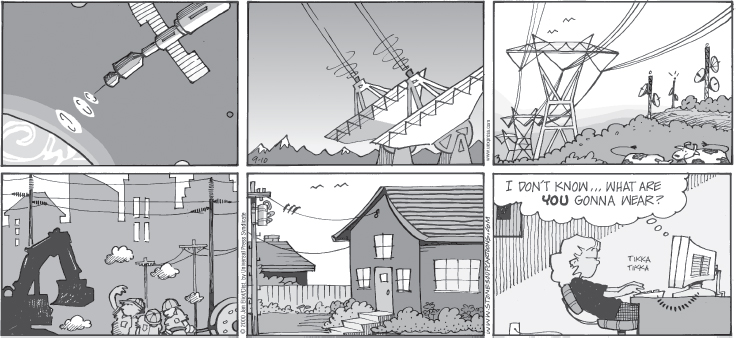CHAPTER 12
NETWORKS AND DATA COMMUNICATIONS—AN OVERVIEW

STONE SOUP © 2000 Jan Eliot. Reprinted with permission of UNIVERSAL PRESS SYNDICATE. All rights reserved
12.0 INTRODUCTION
In Chapter 10, we observed that a network connected to a computer could be viewed from the perspective of the computer simply as another I/O device. Indeed, for many purposes, this is an attractive and appropriate choice. As users, we don't really care if a file that we are using is stored on a local disk drive or on a cloud server located halfway 'round the world, provided the file is readily accessible. As long as we can retrieve our printouts conveniently, it is not important to us that our printer is actually an office printer being shared by others. In Chapter 2, Figure 2.6, shown again in Figure 12.1, we viewed the network as a cloud. To each computer in the figure, the cloud is simply another source of I/O. (Notice, by the way, how this leads naturally to the concept of cloud computing.)
As an alternative point of view, the network represents an essential component of modern technology infrastructure, providing the ability to interconnect computers, storage devices, computer peripherals, mobile devices, video and audio devices, and, most importantly, other networks. This makes it possible to share resources and services, to share and exchange data and knowledge, and even to communicate and socialize. ...
Get The Architecture of Computer Hardware, Systems Software, & Networking: An Information Technology Approach, 5th Edition now with the O’Reilly learning platform.
O’Reilly members experience books, live events, courses curated by job role, and more from O’Reilly and nearly 200 top publishers.

